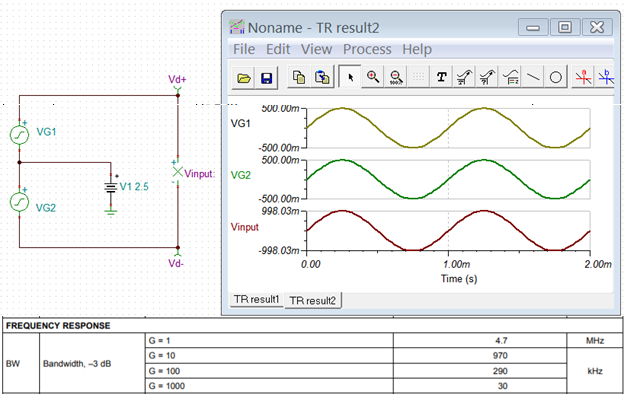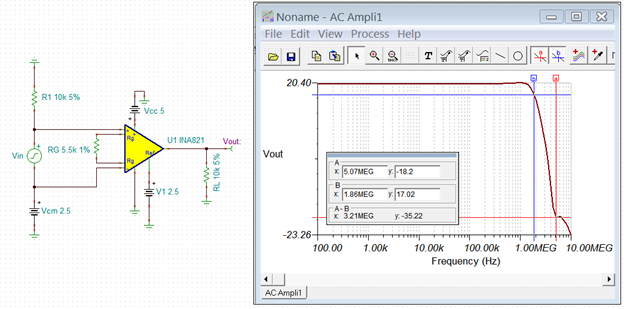Other Parts Discussed in Thread: INA828
Hello,
I want to implement the INA821 in a single supply application, setting the Reference to middle range. So I did some simulations to evaluate the model (using PSPICE 17.4) and was not able to converge the AC simulation in any way using the following circuit:
However, using dual supply (+2,5V -2,5V) and setting the reference and DC common mode voltage to zero, the simulation worked just fine (although some second order deviation from the datasheet curve occurs after 10 MHz - see Figure).
Am I missing something here or is there a problem with the PSPICE model? The datasheet allows 5V single supply, so I don't know what's the problem here.
Thank you,
Kaue





